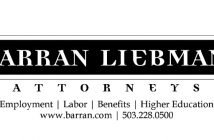For the first time in many years, the City of Prineville Railway(COPR) is expected to break even and maybe even put a little money back into savings. These accomplishments are cause for celebration for a number of different reasons.
“This year we’re proud to announce that we’re going to break even and maybe even make a little money,” reports Matt Wiederholt, operations manager of the COPR. Wiederholt’s justifiable pride is echoed far and wide by supporters of the train and by Prineville city council members and related staff.
Running a municipal freight train is expensive. Anything can happen and frequently does. But Wiederholt and his crew have turned the struggling train around with help from multiple sources, including Connect Oregon grants and Economic Development for Central Oregon (EDCO).
“The main story here is that the railroad exists as a short line railroad, that it’s an economic incentive for manufacturing companies to locate near the line, that several existing companies rely on the railroad and that the nostalgia around the Mt. Emily Shay steam locomotive drives tourism in Crook County,” observes Bill Mintiens, who has a public relations contract with the City of Prineville.
Right from the beginning, the Prineville City Train has depended on the determination of its supporters to create it, design it and nurture it through tough times. Roughly one hundred years old, the train has shaped a lot of history in Prineville and, thanks to the support of knowledgeable staff, the legacy continues.
However, operations, maintenance and the winds of fortune, or the lack of it, can start eating away at profit. There’s a familiar refrain in Wiederholt’s office: “we can only spend what we make.”
The COPR is viewed as a standalone entity which inevitably brings up another favorite phrase which is sustainability.
The turnaround for the train is particularly amazing when considering that as late as 2004 the COPR appeared to have hit rock bottom. In 2004, the train had one customer and had pulled a total of 87 cars the whole year which came across as classic under achievement.
It was a demoralizing descent for the plucky train which had seen the town through many changes over a century, including the lucrative lumber days.
At one time, the COPR generated enough revenue to support the city’s general fund with reserves in the bank, according to Wiederholt. But declining business and other pressures contributed to steady financial drains of about $400,000 a year and in 2004, the future of the train looked bleak.
There was talk of cashing it in and scrapping the whole deal, observes Wiederholt. Prineville City Manager Rob Corbett helped redirect focus on the train with help from other members of the council and supporters. The goal was to once again develop the train so that it operated as a positive economic tool in the area.
“The train operates in what is called an Enterprise Fund,” Wiederholt explains. “There is a misconception with people about that because we’re a standalone entity. We cannot use tax money or subsidies out of the general fund to operate the railroad. That is why it was so critical in 2004 and 2005 that we start swinging this the other way.” Wiederholt, who did helicopter logging prior to coming to Prineville, started ten years ago, around the time the Freight Depot concept was being designed. You might say he has trains in his background, since both his grandfather and great grandfather worked on the Southern Pacific around Eugene. Wiederholt has designed a program that is known for prompt and reliable customer service.
Programs like EDCO work hand in hand to bring in fresh business, keep established business and promote an environment that utilizes resources from all over the country.
“Recently, I worked with Matt Wiederholt to put together a packet of information for the economic development team within Union Pacific,” observed Caroline Ervin, EDCO manager for Prineville/ Crook County.
The goal being to give Prineville more exposure and encourage companies looking specifically for rail access to site here. The packet included information about the COPR and Freight Depot as well as site options, benefits of doing business in Prineville and available economic development incentives. (Of these incentives, the most important to economic development in Crook County is the Enterprise Zone, which provides tax abatement on eligible real property and equipment for a period of three-15 years for companies that meet the capital investment and job creation requirements).
Positive change happened in a series of steps and is still happening, thanks to a myriad of forces.
“We’re very proud that each year we have closed the revenue gap down to where we’re either at, or very close to, a break-even situation that the railroad hasn’t seen operationally for a couple of decades,” observes Steve Forrester, city manager for the City of Prineville.
“The important thing is that we’re still progressing. We’re still adding customers, and gaining numbers of freight cars either inbound or outbound. It hasn’t been as fast as we would have liked, but each year, even during the down turn of the economy, we were able to continue to build strength in the organization. It’s a huge comeback story. We got creative….”
Business can shift in one week on the railroad, says Wiederholt. “I can get a phone call in the morning and it will be a $30,000 deal that went awry. Then in the afternoon I may get someone wanting to store 600 rail cars and that’s worth about $175,000. It fluctuates with us that much, because everything on the railroad is expensive when it comes to breakdowns. Maintenance operations are expensive.” Though they’re not quite there yet, breaking even this year was a major accomplishment and that includes possibly increasing the fund balance by about $25,000. The COPR now has 28 customers and ships all over the country because of access to BNSF and Union Pacific at the Prineville City Junction two miles north of Redmond. This important connection means that the train can ship product back and forth all over the continent, and it does.
One of the enticements to ship on the train is what Wiederholt calls the 500 mile circle around Prineville. Looking at the radius of the circle, it’s cheaper to truck product from inside the circle, but, once outside the 500 mile radius, rail is the way to go. And as more business comes into Prineville, it is hoped and expected that more and more product will be shipped out for companies that wish to go national. So operationally sustainable is a goal he hopes to reach by next year.
“In our view, operationally sustainable would be putting money back into our rail for maintenance. Long term maintenance and infrastructure upgrades,” Wiederholt offers. “So for next year we want to break even and we want to put at least twenty-five percent of our revenue back into the track and then grow our budget by about $30,000, but we’re not there yet.”
The City of Prineville Railway is an 18 mile shortline that is owned and operated by the City of Prineville. It is consistent switching with daily Class One interchanges and has a capability of storing 400 rail cars. Like many other supporters who have viewed the train’s progress, Prineville City Mayor Betty Roppe is proud of the most recent success.
“The City of Prineville Railroad used to supply a lot of income to the City of Prineville in the days of heavy timber production,” Roppe said in a recent statement. “Since the City lost most of the timber mills in our community, the railroad has not been self-sufficient. In recent years, we have had a good boost to the railroad because of Connect Oregon grants and we added the Freight Depot. We have started making more contacts with local and regional companies that can use our facilities.
“We have also diversified with the type of product we carry—everything from lumber to dog food to de-icer. This department of the City is becoming self-sufficient and will make a small profit this year. It is our expectation that this will continue to improve next year.”
541-447-6251
www.cityofprinevillerailway.com
(Photo above: Railroad engines | Courtesy City of Prineville)





